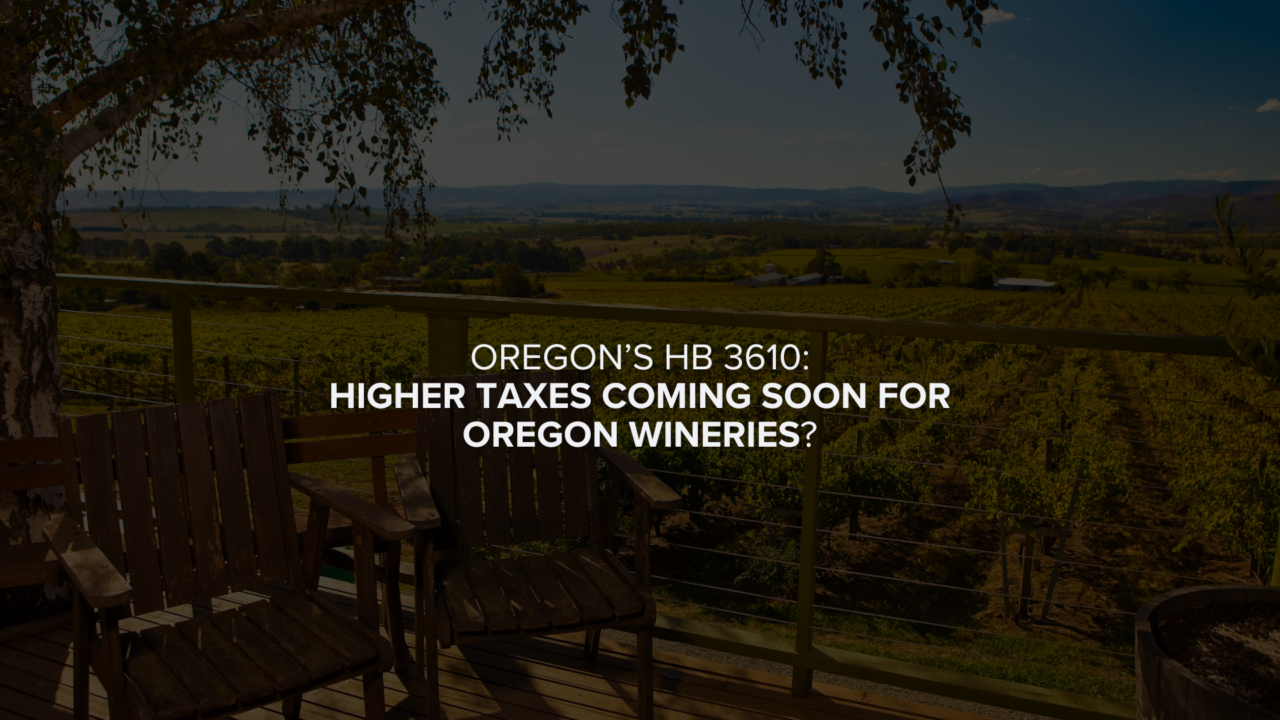New clients regularly ask for the inside scoop on the latest loophole to reduce or eliminate their tax liability. It is common for wineries to see high cash outflow for operations with minimal profits and sometimes they’re still stuck with a tax bill at the end of the year. Too often I see firms marketing complex tax strategies that involve expensive studies or complex legal structuring that breeds administrative headaches and result in tax savings that are quickly absorbed by professional fees. This article addresses the “low-headache basics” that should be explored before looking to complex tax strategies.
1. The Cash Method of Accounting
The cash method was established by the IRS to encourage simplicity for the taxpayer and to match income tax liabilities to cash inflows. The cash method allows for more flexibility for the taxpayer and can result in a deferral of income taxes.
There are two instances where the cash method can be used in a winery or vineyard setting:
- Wineries with under $1M of revenue are eligible
- Vineyards are eligible regardless of total revenue, if other requirements are met
Using traditional accounting standards, the costs of inputs into wine are capitalized to inventory and a deduction is only received when the wine is sold. The cash method allows wineries with under $1M in revenue to deduct many inputs into the wine when they are paid for rather than when the wine is sold. For red wines that spend time in a barrel, this would mean you are deducting expenses 2 – 3 years before you normally would.
Using the cash method for wineries with estate vineyards can be even more beneficial. Under the accrual method, an estate winery will accumulate farming costs to grow and harvest the grapes. Those costs will be included as an input into the wine and then deducted once the wine is sold. Under the cash method, a winery is able to deduct all of its estate farming costs in the year paid. This may mean accelerating the deduction for your farming costs by 2-3 years!
The question I get most often is ”Do I need to separate my vineyard from my winery as different legal entities to use the cash method?” The simplistic answer is no. Under the IRS division accounting method rules, you can have a winery using the accrual method and a vineyard in the same legal entity using the cash method.
2. Cost Segregation of Capital Assets
When purchasing an existing vineyard or winery, or developing one, many opportunities exist to accelerate deductions and generate tax savings.
Most vineyard purchase agreements I review include two or three classifications: Vineyard Improvements, Land and/or Vineyard Equipment. Unfortunately, the portion of the purchase price allocated to land tends to be the catch-all and is not depreciable for tax purposes. This means that the buyer will never receive a deduction for that portion of the purchase price. The more advantageous method is to carve out all of the depreciable assets and separately identify them. This includes things like: roads, bridges, fences, ponds/wells, drainage tiles, equipment sheds, etc. Many of these assets can be recovered over a 7 year life. We often go as far as recreating the cost to develop an existing vineyard to determine the proper allocation between vines, trellis, irrigation, etc.
This acceleration of depreciation can reduce your tax liability and result in a real cash savings. Those savings can then be reinvested into the growing business or available to the winery or vineyard owner for draws and distributions.
3. Treating Your AVA Designation Like a Trademark
Establishing an American Viticultural Area (AVA) is an important way to distinguish the unique growing conditions and terroir of a vineyard. As growers and winemakers know, it has a significant impact on land and grape prices. According to the USDA crush report, a ton of Chardonnay grapes from an AVA within Santa Barbara or San Luis Obispo County will likely sell for 530% of what the same ton will sell for from the Central Valley. The ability to use the AVA in marketing your fruit or wine is akin to any other trademark and can be treated as such for tax purposes.
The value of the AVA designation is often considered inherit in the land value and not depreciated. After a long, drawn out fight the IRS provided guidance that the value of an AVA can be amortized over 15 years (similar to a trademark value). The value of the AVA is determined through a valuation and is usually expressed as a percentage of land value. In Napa Valley it is not uncommon to see AVA values in the 30% – 40% range.
For vineyards purchased after August 10, 1993, you may be eligible to make a catch-up adjustment to account for the years you did not take advantage of this incentive. The cumulative adjustment means that a vineyard purchased more than 15 years ago, but after 8/10/1993, would be able to claim a current deduction for the entire value of the AVA in the year the change is filed with the IRS.
4. Vineyard Development Cost
Historically there were two options for the tax treatment of vineyard development. One option was to capitalize all costs related to the vineyard development and begin depreciating the vineyard once the first commercially viable crop was harvested. The second option was to make an election to deduct preproductive costs as incurred during the development phase. In a static model with low inflation and bonus depreciation available, the first option is usually better. However, the first option means there will be no tax deductions available until the grapes are harvested and sold or until the wine is sold if you are making wine with estate grapes. To the surprise of many, this may mean your first dollar of vineyard development spent is not deductible until 4-5 years later, when your first bottle of aged red wine is sold.
As bonus depreciation is phased out over the next five years, we may see people revert to electing to deduct pre-productive costs.
In 2016, the legislature provided a new incentive for grape growers. The new rules allow for bonus depreciation to be claimed in the year vines are planted. This means that you can claim 50% of the cost of vines and planting costs that are planted in 2017. This percentage reduces by 10% each year through 2022 when bonus depreciation will expire.
5. Replacing Diseased Vines
The estimated cost to California grape growers related to Pierces Disease in recent history was estimated to be $56.1 million per year[i]. Now there are increasing concerns about Red Blotch and the Glassy-Winged Sharpshooter. The IRS and California Franchise Tax Board (FTB) recognize the hardship of replacing vines due to disease and have provided some incentives to ease the hardship. The IRS allows for the immediate expensing of some of the costs that would typically be required to be capitalized when redeveloping a vineyard. The loss for the vines replaced is also allowed as an abandonment loss.
The California FTB does not fully conform to the IRS treatment, but does allow for accelerated depreciation of some of the vineyard development assets.
What now?
If you suspect you may have missed any of the items above, there is still time to make a correction. By requesting a change in your accounting method with the IRS you are allowed a cumulative “catch-up” adjustment. We have seen the items above reduce taxable income by over a million dollars for a medium size winery.
The first step in the process is to take inventory of the methods currently being used and to understand all of the methods available to you. We can usually achieve this in our initial review and then can move to the next step, which is quantifying the dollar impact of making a change.




